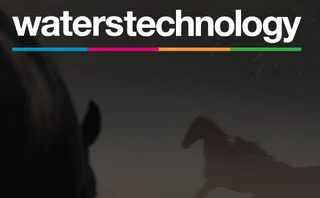Numerix Adds 'Las Vegas Monte Carlo' Exposure Calculation to Analytics
New approach uses algorithmic exposure method to generate scenarios, simulate future values.

A challenge since 2008 with the introduction Basel II and III, Solvency II insurance regulation and IFRS 13, financial institutions are required to hold capital and reserves sufficient to support their risks. The monitoring, hedging or optimization of risk has been compounded with the Risk Weighted Assets minimal capital requirement (RWA), Counterparty Credit Exposures (CCE) and Credit Value Adjustment (CVA) as well as Funding Value Adjustment (FVA) and related XVA adjustments.
“Quantitatively all of these measures are linked to the price and exposure distribution at future time horizons," says Dr. Serguei Issakov SVP, global head of quantitative research. "This requires portfolio level Monte Carlo based simulations capable of producing risk neutral pricing at future time horizons along real world scenarios. The challenge then becomes how to combine scenario generation – both in risk neutral and real world measures to obtain exposures along a given scenario at a future time horizon. For large portfolios of deals, these calculations can require billions of simulation paths and can take significant amounts of time.”
Backward Induction
Using iterative backward induction, the new method of simulation of exposures can be applied in the contexts of various valuation adjustments (XVA) accounting for counterparty risk, funding and capital, the calculation of risk measures that use averages of future values, such as VaR and expected shortfall for market risk, and PFE, EPE/ENE, for counterparty risk, scenario generation, and in real world measures.
“In our research we’ve generalized the backward induction to compute a future value of a derivative on real world scenarios that corresponds to the full instrument value on future dates with effects of exercises and triggers included,” says Dr. Alexander Antonov, SVP of quantitative research and development. “Referred to as the Las Vegas Monte Carlo method, this approach enables a much more efficient exposure of path dependent instruments especially options with early exercise optionality like Barriers, Bermudan Swaptions and Autocaps. Also for those instruments where option value is dependent on underlying fixings history like an Asian and Lookback option.”
To determine algorithmic exposure under real world measure a resampling technique may also be applied – essentially resampling of the price distribution on the future observation date. The Numerix resample algorithm obtains risk neutral pricing on real world scenarios based on backward Monte Carlo.
“The approach avoids the inefficiency of the Brute Force approach for simulation on real world economic scenarios and dramatically reduces computation times by using resampling to connect real world scenarios with American Monte Carlo," Antonov adds.
Only users who have a paid subscription or are part of a corporate subscription are able to print or copy content.
To access these options, along with all other subscription benefits, please contact info@waterstechnology.com or view our subscription options here: http://subscriptions.waterstechnology.com/subscribe
You are currently unable to print this content. Please contact info@waterstechnology.com to find out more.
You are currently unable to copy this content. Please contact info@waterstechnology.com to find out more.
Copyright Infopro Digital Limited. All rights reserved.
You may share this content using our article tools. Printing this content is for the sole use of the Authorised User (named subscriber), as outlined in our terms and conditions - https://www.infopro-insight.com/terms-conditions/insight-subscriptions/
If you would like to purchase additional rights please email info@waterstechnology.com
Copyright Infopro Digital Limited. All rights reserved.
You may share this content using our article tools. Copying this content is for the sole use of the Authorised User (named subscriber), as outlined in our terms and conditions - https://www.infopro-insight.com/terms-conditions/insight-subscriptions/
If you would like to purchase additional rights please email info@waterstechnology.com
More on Trading Tech
Systematic tools gain favor in fixed income
Automation is enabling systematic strategies in fixed income that were previously reserved for equities trading. The tech gap between the two may be closing, but differences remain.
Waters Wrap: Examining the changing EMS landscape
After LSEG’s decision to sunset Redi, Anthony examines what might lie ahead for the EMS space.
This Week: Clear Street, AXA/AWS, TD Bank/Google Cloud and more
A summary of the latest financial technology news.
LSEG to sunset Redi EMS in favor of Tora
Sources say competitors will look to seize on the decision to win over Redi’s sizeable US client base.
WatersTechnology latest edition
Check out our latest edition, plus more than 10 years of our best content.
Getting aggressive: Overbond uses AI to assess dealer axes
The fixed-income analytics specialist has developed a new tool to help buy-side firms decide if they’re getting a good price from their dealers.
TS Imagine integrates LTX’s pre-trade analytics tool
Users of the fixed-income EMS will now have access to LTX’s Liquidity Cloud tool, which provides a pre-trade score for the likelihood of trading success.
Most read
- Sell-Side Technology Awards 2024: All the winners
- Sell-Side Technology Awards 2024: Best sell-side front-office platform—Bloomberg
- Systematic tools gain favor in fixed income







